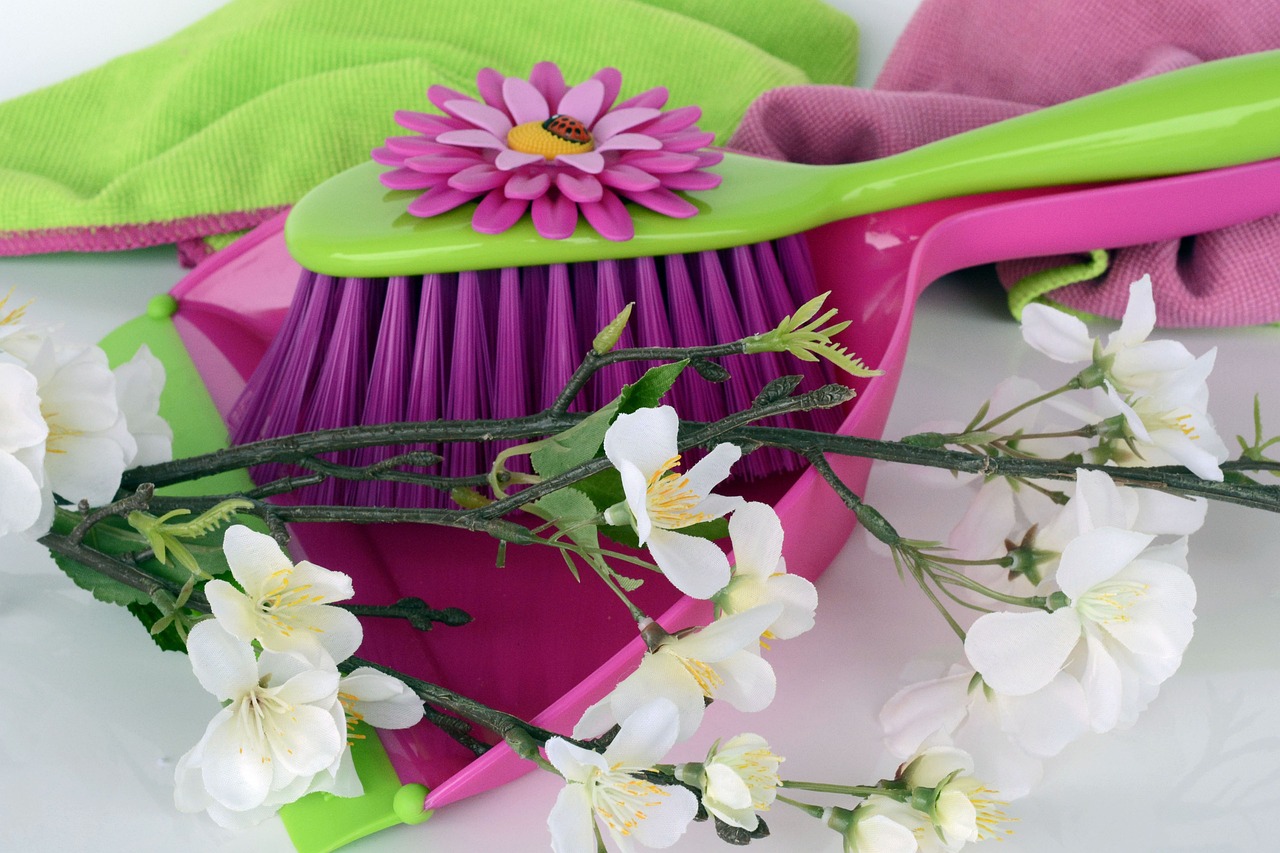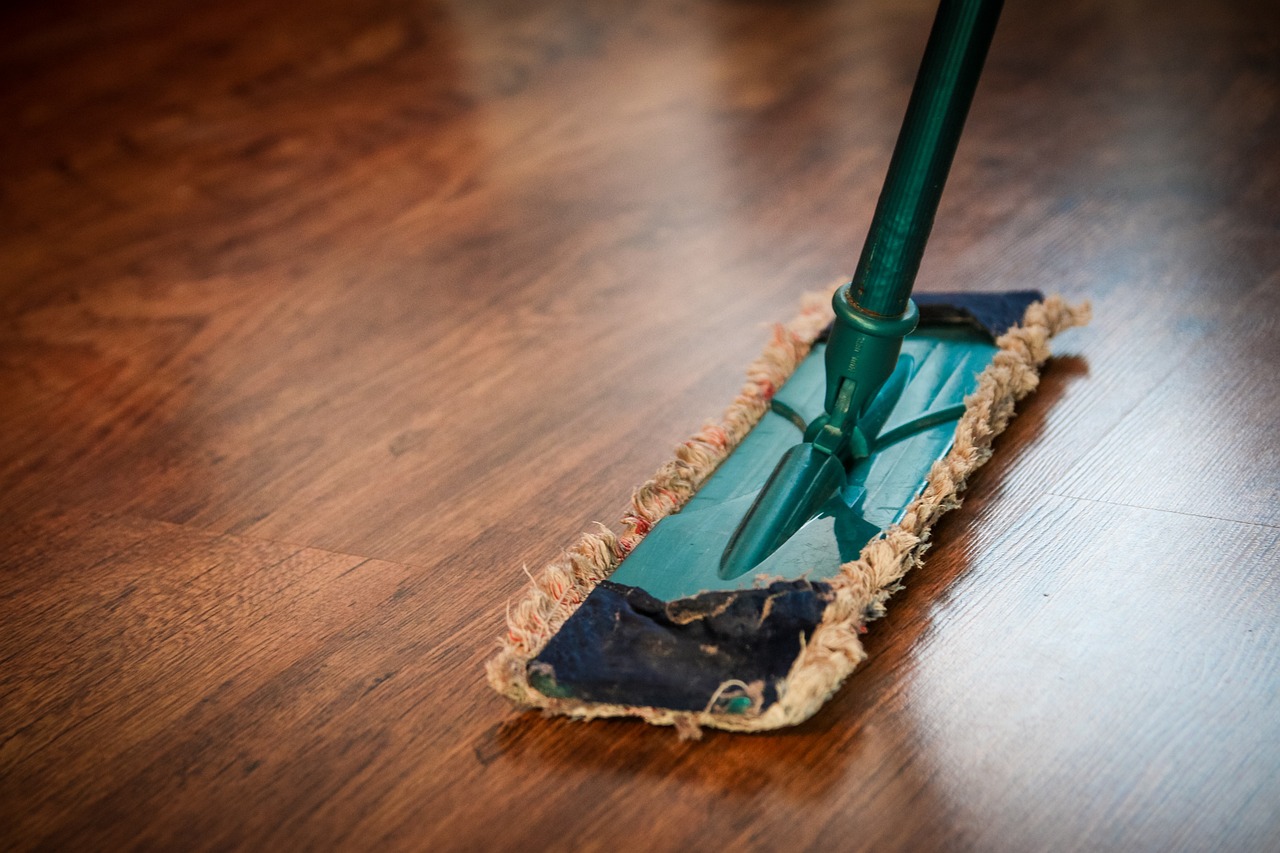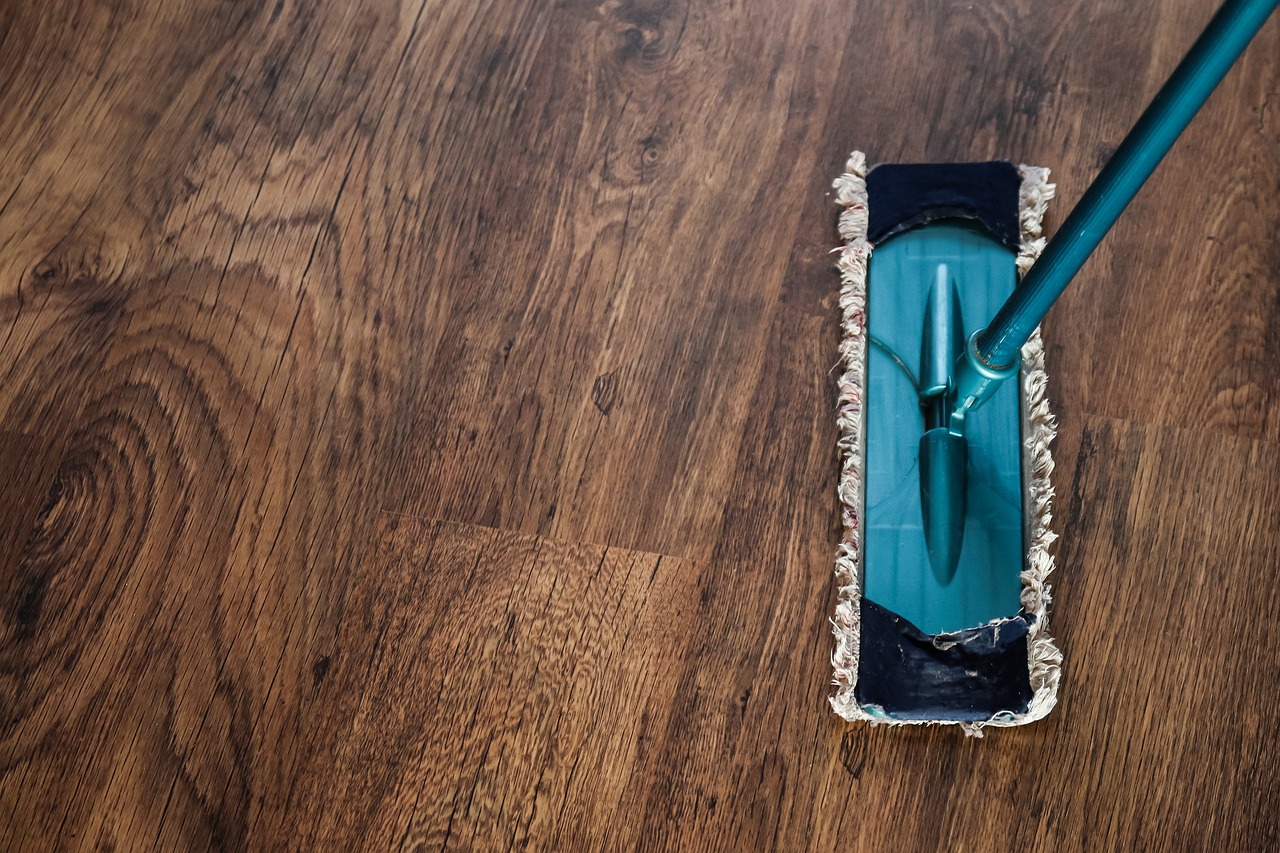How to Create a Cleaning Schedule for Multiple Bathrooms
Creating a cleaning schedule for multiple bathrooms can be a daunting task, but with the right approach, it can become a manageable and efficient process. By assessing your needs, delegating responsibilities, establishing a cleaning routine, organizing cleaning supplies, prioritizing high-traffic areas, implementing time-saving strategies, monitoring and adjusting as necessary, celebrating successes, and seeking feedback for improvement, you can ensure that all bathrooms are consistently clean and well-maintained.

Assess Your Needs
When it comes to creating a cleaning schedule for multiple bathrooms, the first step is to assess your needs effectively. Take a moment to evaluate the number of bathrooms in your space, their sizes, and how frequently they are used. This initial assessment will help you understand the cleaning requirements and set the foundation for an efficient cleaning routine.
Consider whether the bathrooms are shared or private, as shared bathrooms may require more frequent cleaning due to higher usage. Take note of any specific cleaning challenges you may face, such as hard water stains, mold, or mildew. Additionally, ensure that you have the necessary cleaning supplies on hand to tackle these challenges effectively.
Creating a cleaning schedule tailored to your specific needs starts with a thorough assessment. By understanding the unique requirements of each bathroom, you can develop a cleaning plan that addresses all areas of concern and ensures a consistently clean and hygienic environment.

Delegate Responsibilities
When it comes to managing multiple bathrooms, delegating responsibilities is crucial for ensuring that each bathroom receives the necessary attention and care. By assigning specific cleaning tasks to individuals or creating a rotating schedule, you can distribute the workload effectively and maintain cleanliness across all bathrooms.
One effective way to delegate responsibilities is to create a cleaning checklist that outlines the tasks to be completed in each bathroom. This checklist can include tasks such as scrubbing toilets, cleaning sinks, replenishing supplies, and emptying trash bins. By clearly defining each task, you can ensure that nothing is overlooked during the cleaning process.
Another approach is to establish a rotating schedule where different individuals are assigned cleaning duties on a rotating basis. This ensures that the responsibility is shared among all users of the bathrooms, preventing any one person from being burdened with the cleaning tasks all the time.
Communication is key when delegating responsibilities. Clearly outline the expectations for each task, provide training if necessary, and establish accountability to ensure that the cleaning duties are carried out effectively. Regular check-ins and feedback sessions can help address any issues or concerns that may arise during the cleaning process.
By delegating responsibilities effectively, you can create a sense of ownership among the individuals responsible for cleaning the bathrooms. This not only ensures that the cleaning tasks are completed efficiently but also fosters a collaborative environment where everyone contributes to maintaining a clean and hygienic space.

Establish a Cleaning Routine
Establishing a cleaning routine is essential to ensure that all bathrooms are consistently clean and well-maintained. By creating a schedule that outlines specific tasks to be completed on a regular basis, you can effectively manage the cleaning process. Start by determining the frequency of cleaning required for each task, whether it be daily, weekly, or bi-weekly. This will help you set a clear timeline for when each task should be completed, ensuring that no area is overlooked.
When establishing a cleaning routine, consider the specific needs of each bathroom. High-traffic areas such as sinks, toilets, and showers may require more frequent cleaning compared to less frequently used areas. Prioritize tasks based on the level of dirt and grime accumulation to ensure that the most critical areas are addressed first. By focusing on the areas that require immediate attention, you can maintain a hygienic environment in all bathrooms.
Another important aspect of establishing a cleaning routine is to create a systematic approach to the cleaning process. Start with tasks that require more time and effort, such as scrubbing toilets and cleaning showers, before moving on to simpler tasks like wiping down surfaces and mirrors. This will help you streamline the cleaning process and ensure that all tasks are completed efficiently.
Consider creating a checklist or a cleaning schedule that outlines the tasks to be completed each day or week. This can help you stay organized and track your progress as you work through the cleaning routine. Breaking down the cleaning tasks into manageable steps can make the process less overwhelming and more manageable.

Organize Cleaning Supplies
When it comes to maintaining multiple bathrooms, organizing cleaning supplies is a crucial aspect of ensuring efficiency and effectiveness in your cleaning routine. By centralizing your cleaning supplies in each bathroom or creating a designated cleaning caddy that can be easily transported between bathrooms, you can streamline the cleaning process and make it more convenient.
Having all necessary supplies readily accessible not only saves time but also ensures that you have everything you need to tackle different cleaning tasks effectively. Consider creating a checklist of essential cleaning supplies for each bathroom to avoid running out of products mid-cleaning. This proactive approach can help you stay prepared and maintain a consistent cleaning schedule.
Furthermore, organizing your cleaning supplies in a systematic manner can help prevent confusion and reduce the likelihood of overlooking any essential items. Consider categorizing your supplies based on the type of cleaning task they are used for, such as glass cleaners, disinfectants, or scrubbing brushes. This approach can help you locate the required supplies quickly and efficiently, enhancing the overall cleaning process.
If you have multiple bathrooms with varying cleaning requirements, consider customizing the contents of each cleaning caddy based on the specific needs of that particular bathroom. This tailored approach can help you address individual cleaning challenges effectively and ensure that each bathroom receives the attention it requires.

Prioritize High-Traffic Areas
When it comes to maintaining multiple bathrooms, it's crucial to prioritize cleaning high-traffic areas to ensure a hygienic environment for all users. These areas, such as sinks, toilets, and showers, are prone to accumulating grime and bacteria more quickly due to frequent use. By focusing on these key spots, you can effectively prevent the buildup of dirt and maintain a clean and inviting space for everyone.
Imagine high-traffic areas as the bustling city streets that require constant attention and maintenance to keep them running smoothly. Just like a city's main thoroughfares, these parts of the bathroom experience heavy foot traffic and need regular cleaning to prevent congestion, in this case, caused by germs and dirt.
One effective strategy is to establish a more frequent cleaning schedule for these areas compared to less-used spaces. By prioritizing high-traffic zones, you can stay ahead of any potential cleanliness issues and create a welcoming environment for all bathroom users. Think of it as giving these areas extra care and attention to ensure they remain in top condition.

Implement Time-Saving Strategies
When it comes to managing multiple bathrooms, time-saving strategies can be a game-changer in maintaining cleanliness without sacrificing efficiency. Picture this: you're juggling scrubbing toilets, wiping down surfaces, and mopping floors in several bathrooms—all while trying to save time and energy. It's like orchestrating a well-choreographed dance where every move counts towards the grand finale of sparkling clean bathrooms.
One effective time-saving strategy is to multitask efficiently. Instead of cleaning each bathroom separately, identify tasks that can be done simultaneously. For example, while a cleaning solution sits on one toilet, you can move on to wipe down surfaces in another bathroom. This way, you're maximizing your efforts and minimizing the time spent on each task.
Additionally, investing in efficient cleaning tools can significantly speed up the cleaning process. Consider using microfiber cloths that trap dirt effectively, reducing the need for multiple passes. Similarly, using a high-quality mop with a rotating head can make mopping floors a breeze, cutting down on time and effort.
Establishing a routine that minimizes wasted time is another crucial time-saving strategy. By creating a structured cleaning schedule and sticking to it, you can avoid procrastination and ensure that all tasks are completed in a timely manner. Consistency is key here—treating your cleaning routine like clockwork will help you stay on track and prevent tasks from piling up.
Imagine your cleaning process as a well-oiled machine, smoothly running through each bathroom with precision and speed. By implementing these time-saving strategies, you can streamline your cleaning tasks, making the process more manageable and efficient. Remember, in the world of multiple bathrooms, time is of the essence, and every second saved counts towards achieving spotless results.

Monitor and Adjust
When it comes to maintaining cleanliness in multiple bathrooms, monitoring and adjusting your cleaning schedule is crucial for long-term success. Regularly evaluating the effectiveness of your cleaning routine allows you to make necessary changes and improvements to ensure all bathrooms remain clean and well-maintained.
One effective way to monitor and adjust your cleaning schedule is to keep a cleaning log or checklist for each bathroom. This can help track when specific tasks were last completed and identify any areas that may need extra attention. By maintaining detailed records, you can easily spot trends or patterns that may require adjustments in your cleaning routine.
Additionally, consider seeking feedback from individuals using the bathrooms. Their input can provide valuable insights into areas that may need improvement or additional cleaning attention. Encouraging open communication about the cleanliness of the bathrooms can help you tailor your cleaning schedule to better meet the needs and expectations of the occupants.
Another important aspect of monitoring and adjusting your cleaning schedule is staying flexible. Usage patterns of the bathrooms may change over time, requiring you to adapt your cleaning routine accordingly. By remaining open to making changes as needed, you can ensure that your cleaning schedule remains effective and efficient.
Regularly reviewing and adjusting your cleaning schedule demonstrates your commitment to maintaining clean and hygienic bathrooms. By actively monitoring the cleanliness of each bathroom and making necessary adjustments, you can create a more streamlined and effective cleaning routine that benefits both users and cleaning personnel.

Celebrate Successes
Celebrating successes in maintaining clean bathrooms is essential to boost morale and motivation among those involved in the cleaning process. By acknowledging and appreciating the efforts put into keeping the bathrooms clean, you create a positive environment that encourages continued success.
One way to celebrate successes is by organizing small gatherings or events to recognize the hard work of individuals responsible for cleaning the bathrooms. This can include simple gestures like providing snacks, beverages, or even small tokens of appreciation to show gratitude for their dedication.
Furthermore, displaying a visible chart or board that tracks the cleanliness achievements of each bathroom can serve as a visual reminder of progress made. This not only motivates the cleaning staff but also instills a sense of pride in maintaining a high standard of cleanliness.
Another effective way to celebrate successes is by implementing a reward system based on performance. This can involve incentives such as bonus pay, extra time off, or other perks for exceeding cleanliness goals or consistently upholding cleaning standards.
Moreover, fostering a culture of recognition and praise within the cleaning team can significantly impact morale and job satisfaction. Encouraging peer-to-peer recognition and creating a supportive environment where achievements are acknowledged can lead to a more engaged and motivated team.
In conclusion, celebrating successes in maintaining clean bathrooms is not only about acknowledging the task itself but also recognizing the dedication and hard work of the individuals involved. By creating a culture of appreciation and recognition, you can inspire continued excellence in cleanliness standards.

Seek Feedback and Improvement
Seeking feedback and continuously striving for improvement are essential components of creating an effective cleaning schedule for multiple bathrooms. By actively engaging with users and incorporating their input, you can refine your cleaning routine to better meet the needs and expectations of all occupants.
One effective way to gather feedback is to distribute surveys or suggestion boxes in each bathroom, allowing users to provide comments and suggestions anonymously. This approach can help uncover areas that may require additional attention or improvements, ensuring a more comprehensive cleaning schedule.
Additionally, consider organizing periodic meetings or discussions with individuals responsible for cleaning the bathrooms to discuss any feedback received and brainstorm potential solutions. Collaboration and open communication can lead to valuable insights and innovative ideas for enhancing the cleanliness and maintenance of the bathrooms.
When receiving feedback, it is important to approach criticism constructively and view it as an opportunity for growth. Identify recurring issues or patterns in the feedback and prioritize addressing them to enhance the overall effectiveness of your cleaning schedule.
Moreover, don't hesitate to experiment with new cleaning techniques, products, or schedules based on the feedback received. Embracing change and being receptive to suggestions can lead to continuous improvement and a more efficient cleaning process for multiple bathrooms.
Remember, seeking feedback and actively pursuing improvement demonstrate a commitment to providing a clean and comfortable environment for all bathroom users. By incorporating feedback into your cleaning schedule and making necessary adjustments, you can ensure that the bathrooms remain well-maintained and meet the expectations of everyone who uses them.
Frequently Asked Questions
- How often should I clean multiple bathrooms?
It is recommended to clean multiple bathrooms at least once a week to maintain cleanliness and hygiene. However, the frequency may vary depending on the usage and number of occupants. Regular cleaning helps prevent the buildup of dirt and bacteria.
- What are some essential cleaning supplies for multiple bathrooms?
Key cleaning supplies for multiple bathrooms include toilet bowl cleaner, all-purpose cleaner, disinfectant wipes, microfiber cloths, rubber gloves, and a mop. Having these supplies readily available in each bathroom ensures efficient cleaning.
- How can I involve other household members in the cleaning schedule?
To involve others in the cleaning schedule, you can assign specific tasks to each household member, create a rotating schedule, or set up a reward system for completing cleaning duties. Clear communication and shared responsibility can help maintain cleanliness effectively.



















